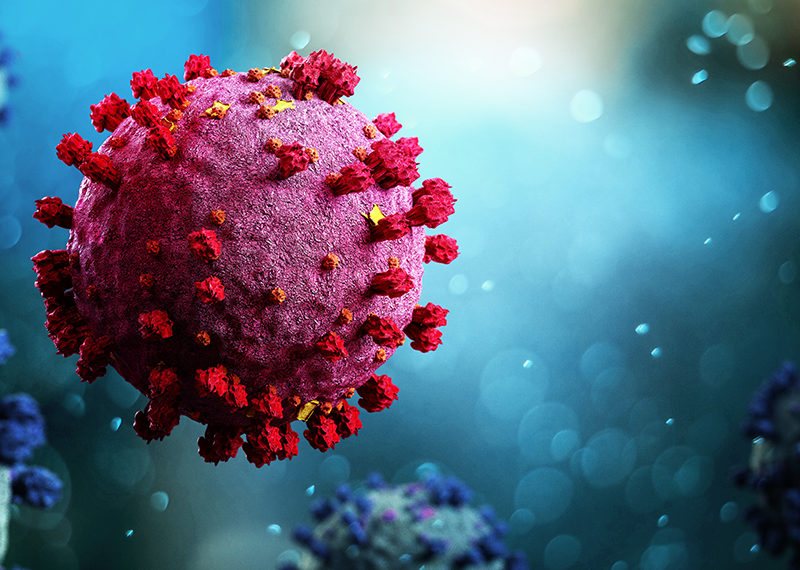Vaccine Enables Model to Clear Hepatitis C Virus and Prevent Persistence
Vaccine Enables Model to Clear Hepatitis C Virus and Prevent Persistence https://pediatricsnationwide.org/wp-content/themes/corpus/images/empty/thumbnail.jpg 150 150 Kevin Mayhood Kevin Mayhood https://secure.gravatar.com/avatar/bd57a8b155725b653da0c499ae1bf402?s=96&d=mm&r=g- April 01, 2019
- Kevin Mayhood
Scientists are conceptualizing an effective HCV vaccine using a new animal model.
Hepatitis C virus (HCV) subverts responses of immune cells, resulting in chronic infection in more than 71 million people worldwide. The virus causes 1.79 million new infections and 399,000 deaths worldwide annually. Antivrials can cure the disease but are unaffordable or not available to much of the population. There is no vaccine.
“A vaccine is necessary to prevent new HCV infections and re-infections in cured individuals,” says Amit Kapoor, PhD, a principal investigator in the Center for Vaccines and Immunity in The Research Institute at Nationwide Children’s Hospital.
But efforts to make a vaccine for a disease that’s found only in humans and chimpanzees have been hobbled by the lack of a small animal model suitable to study what the virus does and how.
Dr. Kapoor and fellow researchers at Nationwide Children’s Hospital have spent several years working to remedy the problem. The investigators have developed a rat model of chronic HCV, which their data suggests is an effective surrogate.
With the model, the investigators provide direct evidence linking an inadequate T cell response to the persistence of a primary hepacivirus infection in a natural host species. Specifically, they show cooperation between CD4+ and CD8+ T cells is essential to immunity. Further, they show that subversion of the T cell responses can be prevented by vaccination with non-structural proteins of the virus.
The research is published in Nature Communications.
“Since rat virus resembles HCV, optimization of vaccination to effectively prevent rat virus infection should, in principle, prevent HCV infection in humans,” Dr. Kapoor says.
To make a model, the research team generated rodent hepacivirus (RHV) from a DNA clone of a virus originally isolated from a feral rat. In this study, the researchers found that RHV became a chronic infection like HCV, in a majority of lab rats after exposure.
Analyses at the molecular level showed RHV has important structural and functional similarities to HCV. For example, RHV and HCV share similar genomic organization — including the location of two liver-specific binding sites the researchers call a defining characteristic of the HCV genome. The viruses also process polyproteins much the same.
HCV infection subverts T cells in humans. Kapoor’s team found that RHV infection does likewise. Initially, an RHV infection induces an expansion of CD8+ T cells but an absence of strong help from CD4+ T cells results in a rapid contraction of CD8+ T cells and a persistent RHV infection.
To develop a vaccine, the researchers used reverse genetics to study the sequences of RHV genetic material, which suggested expression of certain nonstructural proteins may confer immunity. In testing, more than 60 percent of the rat models receiving a single dose of the vaccine were protected against RHV persistence.
In vivo cell-depletion experiments confirmed that both vaccine-primed CD4+ and CD8+ T cell responses were necessary to clear the virus.
Dr. Kapoor says the next step in this investigation “will be to optimize a vaccination approach that can prevent 100 percent of infections.”
Citation:
Hartlage AS, Murthy S, Kumar A, Trivedi S, Dravid P, Sharma H, Walker CM, Kapoor A. Vaccination to prevent T cell subversion can protect against persistent hepacivirus infection. Nature Communications. 2019 Mar 7;10(1):1113.
About the author
-
Kevin Mayhoodhttps://pediatricsnationwide.org/author/kevin-mayhood/
-
Kevin Mayhoodhttps://pediatricsnationwide.org/author/kevin-mayhood/April 25, 2015
-
Kevin Mayhoodhttps://pediatricsnationwide.org/author/kevin-mayhood/April 25, 2015
-
Kevin Mayhoodhttps://pediatricsnationwide.org/author/kevin-mayhood/April 25, 2015
- Post Tags:
- Center for Vaccines and Immunity
- Posted In:
- In Brief







